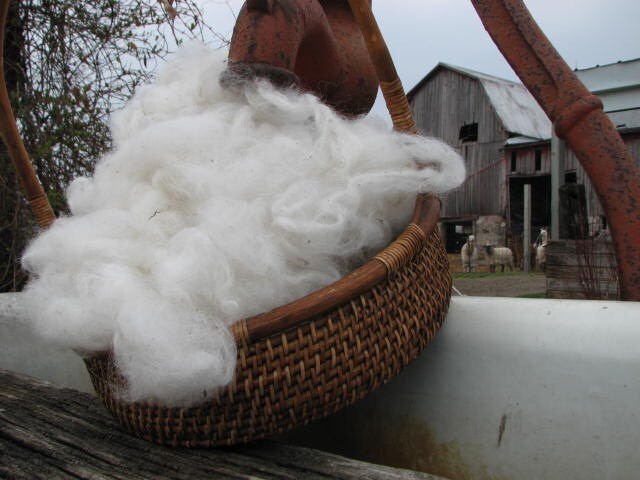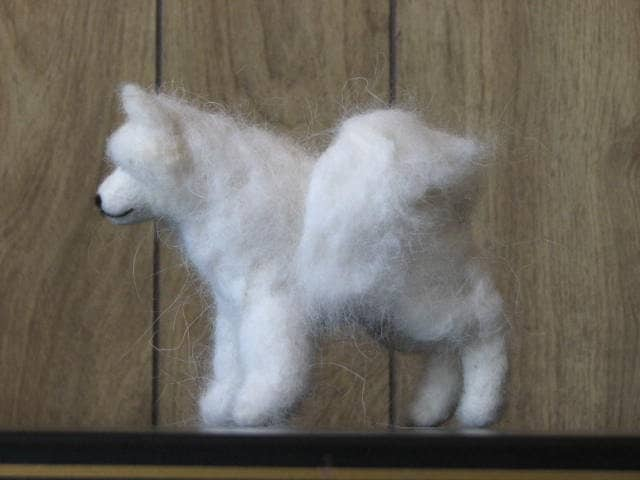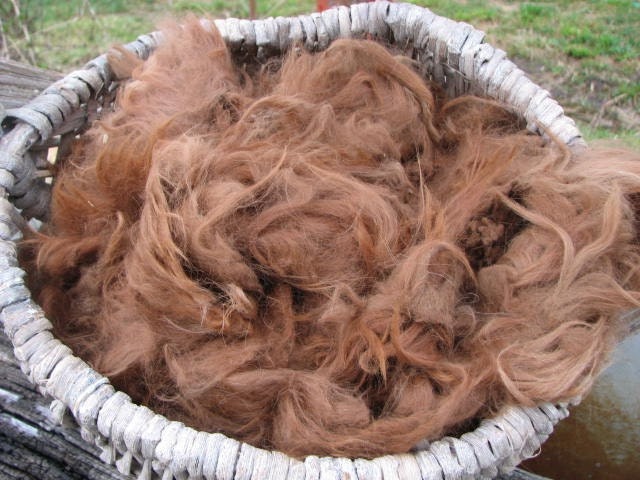So, after learning a little bit about her farm and fiber art plans for the Summer, my daughter and I have decided we are moving in with Hidow Fiber Farm! She doesn't know this yet, but we are very excited to shear some Alpaca, spin some fiber, and dye it using the luscious Summer flowers around the farm.
Seriously, despite the hard work that goes into raising these animals, who wouldn't dream of being that close to the source of all that luscious fiber? In my mind it's akin to knowing and being apart of where your food comes from.
Alpaca are bred all over the world for the soft and silky fiber that is produce from its coat. Originally Alpacas were kept as domesticated in the South American Andes, where they were a primary source of fiber for textiles as well as a source for meat. Though, the use of Alpacas for meat in modern times is virtually non-existent, Peruvian law prohibits it.
Alpaca fiber is a wonderful alternative to sheep's wool. It is generally not prickly like sheep's wool and contains no lanolin, which makes it hypoallergenic. The two primary breeds of Alpaca bred today are the Huacaya and Suri. The Suri is identified by its long 'dreadlock'-type fleece, which produces longer silky fibers. Huacaya have a denser, 'woolier' fleece.
 |
| Huacaya Fiber from Hidow Fiber Farm |
A passion for man's best friend, dogs (sorry cat lovers!), inspires many of the needle felt creations in the Hidow Fiber Farm's Etsy shop. I especially love her Samoyed pup. The big tail flopped to the side gives it a wonderful personality!
 |
| Needle Felt Samoyed by Hidow Fiber Farm |
 |
| Brown/red Suri Fiber by Hidow Fiber Farm |
"Hidow Fiber Farm is located on over 100 acres in the Thumb area of Michigan. Our farm has been in the Hirons family for over 125 years. Grandma and Grandpa Hirons only had girls, so when we bought the name changed to Dowling. The name of Hidow was thought up by Grandma, it was her way of combining the family names to represent the farm, we have kept it in her honor.
I have always been interested in the process of fleece to yarn, and I dreamed of learning to spin someday. While showing dairy goats around the country I used to love watching the llama and alpaca shows and visiting the alpaca area but because of their prices never dreamed I would own one. Two years ago the dream of owning an alpaca became reality. My first 3 Huacaya alpacas were rescues, traded for bales hay. Soon after, the local alpaca herd was selling out and I added several. This spring I bought another 5 Suri fiber males. Currently we have a total of 13 Huacaya and Suri Alpacas and a flock of Shetland sheep.
I jumped into the fiber world with both feet, even before I had any of my own to play with. A drop spindle bought from ebay along with some fiber and You Tube videos taught me how to use a spindle. Then I found an alpaca site with felting so I started researching that area of fiber art. Some locally made goat milk soap and some fiber from ebay and we had felted bars of soap. Then I made the trip over to Zielingers in Frankenmuth and brought home a needle felting kit. A trip to Mary Maxim where I bought several books and a needle felt kit to make a dog. Then I found the "Felt a Dog" book for even more inspiration. With the basics in place I got braver and started 'needleing' (as my 6 yr old calls it) my own creations. I love feeling and watching a dog or other animal take form in my hands. I start with a roll of fiber and just keep adding a little fiber here, a little there and soon I have a sculpture. There are times when I think a project is finished and put it away only to pull it out a few days later and realize there is more to be done with it. Because I also show dogs I try to base my fiber creations on correct representatives of the breed.
It is spring time so that means that right now I am enjoying the process of harvesting my own fiber. There is just something so satisfying about being in the barn and shearing your own animals. Last year I used scissors to shear my alpacas. This year I am better prepared and will be using shears to harvest their fiber. Alpaca shearing will start in May. I have sheared most of my Shetland Sheep in the past two weeks by a combination of rooing, scissors and electric shears.
Right now I am just enjoying the process. The process begins with feeding and caring for these wonderful animals every day. I find it to be very grounding to reap the rewards of my labor when I shear them. Alpaca fiber and wool are renewable sources, just like our hair, they grow their fiber back for the next years harvest. Alpaca is one of the softest fibers out there. Because of the way it is constructed items made from alpaca dont have to be bulky in order to be warm, it is truly a luxury fiber.
Besides working full time and having 1 child still at home, I also breed and Shetland Sheepdogs and dabble in photography. I take care of my animals every day and help my husband with the farming. This summer I am going to giving dying a try with some of the plants growing around the farm. There are so many different things to do with fiber I hope to give them all a try......hmmmmmm learning to weave looks like fun too........oh, and wet felting......... and....... :-)"

No comments:
Post a Comment